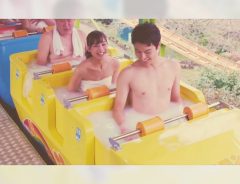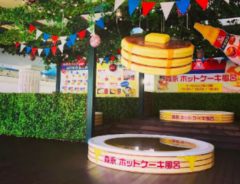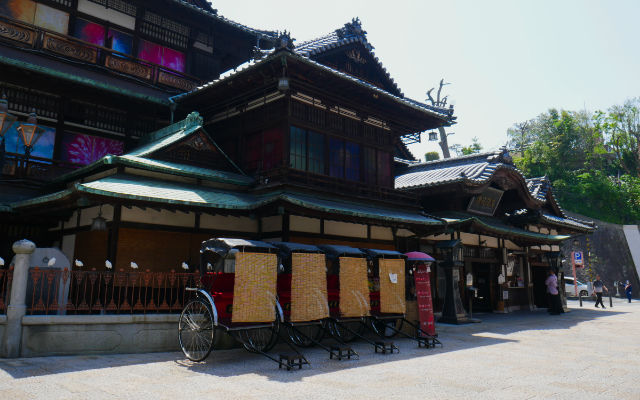- Tags:
- Dogo Onsen / Hot Springs / Matsuyama / Onsen
Related Article
-

Japanese Mayor Promises To Open Hot Spring Amusement Park If This Video Hits 1 Million Views
-

Spend The Night Like An Elite Samurai Inside Uematsuya’s Sengoku Room
-

Maple Syrup Pancake Hot Springs Open In Japan
-

A hot spring with a view: Izu weekend hideaway offers discounted “girls only” deal
-

An Athletic Spa!? Why Beautiful Women Start Synchronized Swimming In Japanese Hot Springs
-

Japanese Zoo’s Capybaras Soak In Yuzu Hot Springs Every Winter



Located on the western side of the often overlooked island of Shikoku is the ancient bathhouse town of Matsuyama. The small city is steeped in history and is perhaps most famously known as the place that gave inspiration to the great writer Natsume Soseki for his nationally treasured novel, Botchan.
The author is said to have based the beloved novel on the time he spent in Matsuyama as a school teacher during the early 20th century. A favourite retreat of Soseki during his time in the city was that of Dogo Onsen Honkan, which is reflected in the novel as his main character, not unlike himself, is a regular visitor to the baths famous waters.
Legend tells that a Japanese Heron discovered Dogo Onsen. Photo credit: Connie Sceaphierde
The Legends of Dogo Onsen
With over 3,000 years of history, Dogo onsen is believed to be Japan's oldest hot spring. The oldest written accounts of the hot springs are recorded in Japan’s ancient anthology, the Manshoku. Written in 759, the report indicates that the area was already a prominent one and it is interesting to take a look into the two famous legends of how the onsen came to be.
Legend of the Egret
One legend tells that 3,000 years ago the hot spring of Dogo Onsen was found by a Japanese white heron, known as an egret. The bird had an injured leg and had settled down by the waterside to take rest when he discovered that the water gushing out from the rocks in front of him was in fact a hot spring. The egret began to bathe his injured leg in the warm water and after a few days had passed, his leg had healed and he flew away stronger than he had ever been before.
Now, some travelling people had watched this miraculous spectacle take place, and when they had seen that the egret was healed and became stronger, they too decided to bathe in the warm waters. After some time, the people found that their fatigue had passed and they quickly recovered from any illness and ailments they had previously had. Ever since then, the valley became known as Sagidani (egret valley) and bathing in the waters became common practice. Over the centuries that followed the hot spring developed into the popular bath town that we see today.
Years later, a stone was put up in the area to commemorate the egret that had found the healing spring waters of Dogo Onsen. The stone known as the Sagi Ishi (egret stone) is said to show footprints left by the heron that discovered the onsen and can be found in its current location at Hojoen Square outside of the station at Dogo Onsen.
Legend of Tamanoishi
The second legend tells the story of when two gods from Izumo visited the area thousands of years ago. The two gods in question were the giant kami Okuninushi no Mikoto and the tiny kami Sukunahikona no Mikoto. When they were traveling Sukunahikona suddenly fell frightfully ill, so much so that it appeared as though he was dying.
Okuninushi, who feared the death of his friend carried Sukunahikona in the palm of his hand to the waters of Dogo Onsen. After bathing in the warm waters, Sukunahikona recovered immediately and to prove to Okuninushi that he was healthy, he danced upon a round stone in the hot spring. The stone came to be known as the Tamanoishi and can be found located on the north side of Dogo Onsen Honkan. It is believed that people can recover from sickness by pouring hot spring water with a ladle over the stone.
Traditional Matsuyama sweets that can be purchased in the nearby shopping arcade. Photo credit: Connie Sceaphierde
The Building
The current main building of Dogo Onsen, known as the Honkan was built in 1894. Resembling a Japanese castle, it consists of 3 floors with two different baths. The more popular of the baths is the Kami no yu which costs 410 yen for a simple 60 minute soak in the large bath. For an additional 430 yen, visitors can don a traditional yukata and gain access to a tatami room on the second floor for tea and biscuits. The smaller, more private bath known as the Tama no Yu is priced at 1250 yen for a 60 minute bath entrance, a rental towel and a tour of the emperor’s private bath. For 1550 yen, visitors to the Tama no Yu can gain additional access to a private tatami room on the third floor where they will be served tea and the city’s speciality sweet “Botchan Dango”.
The Honkan is widely recognised as the inspiration behind Miyzaki’s Aburaya bathhouse in his film Spirited Away. According to locals there was an increase in visitors following the release of the film in 2001.
On the eastern side of the main building is a bathhouse called the Yushinden. The Yushinden is a private bath built for the use of the Japanese imperial family in 1899, however, no members of the royal family have used the baths since 1952. Inside the Yushinden there is also the private bath of the emperor, the Gyokuza no Ma. Although bathing in the Yushinden is reserved entirely for the royal family, visitors can view the baths (when they’re empty) for an additional fee.
There is a small exhibit of past artefacts relating to the onsen on the second floor and on the third floor a tatami room, said to be the favourite of the writer Natsume Soseki, has a display about his life.
Overall the onsen offers a lot more than just a bath and biscuits and sees an influx of around 800,000 people per year. With 2,000 visitors daily, it can be a little hard to find a tranquil moment when bathing at Dogo. Because of the busy nature of the baths, it is recommended to visit around dinner time, when tourists are enjoying their meals at the inn. Another option is to take a dip in the waters at Tsubaki no Yu, Dogo Onsen’s annexe hot spring just one minute walk away from the Honkan.
The main baths see more than 2,000 visitors on a daily basis. Photo credit: Connie Sceaphierde
How to get to Dogo Onsen
The main bathhouse of Dogo Onsen is situated just four minutes from Dogo Onsen station by foot. To reach Dogo Onsen station visitors should take a 20 minute ride on tram line 5 from JR Matsushima station for a fee of 160 yen. Alternatively, visitors can take a 15 minute ride on tram line 3 from Matsuyama-shi station which will also cost 160 yen.